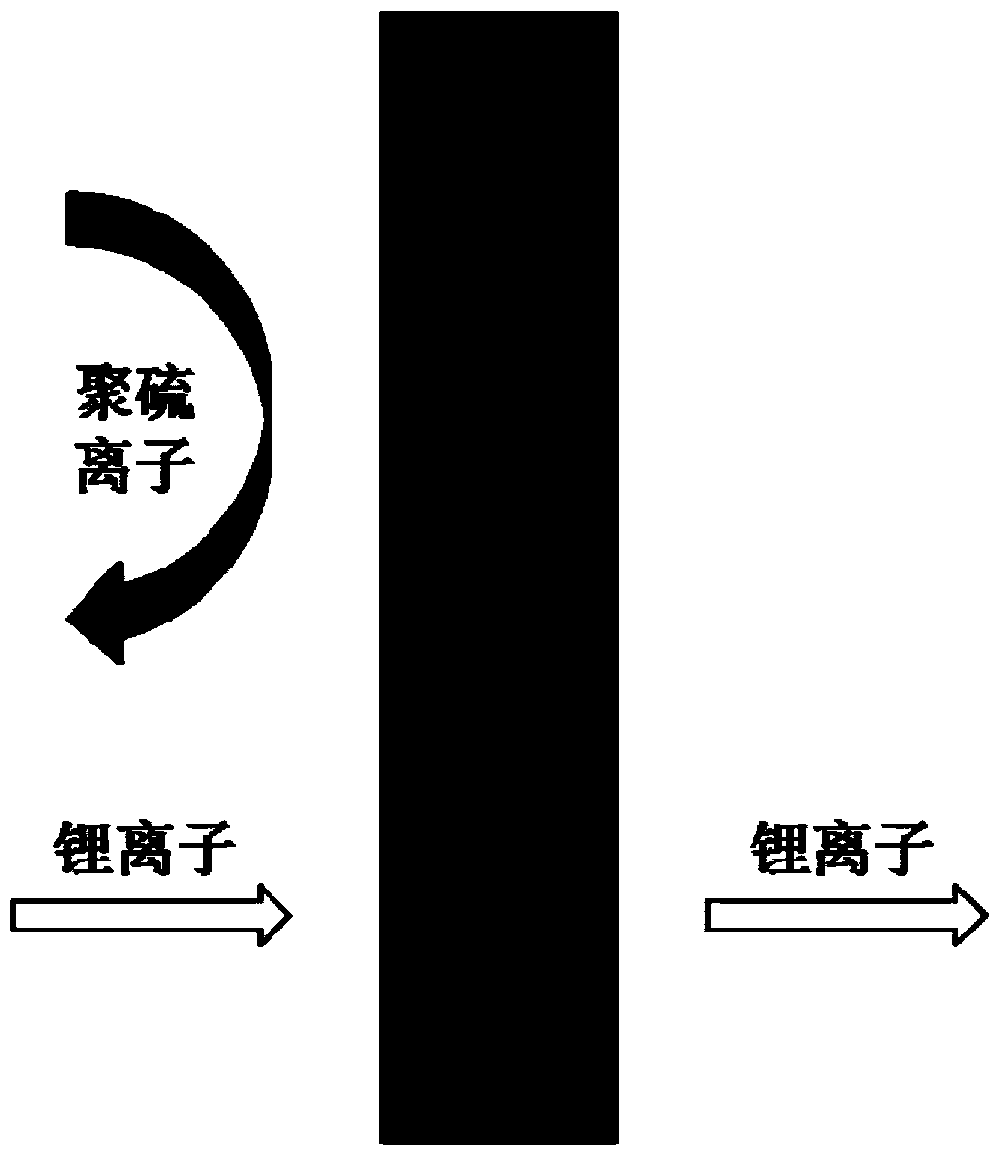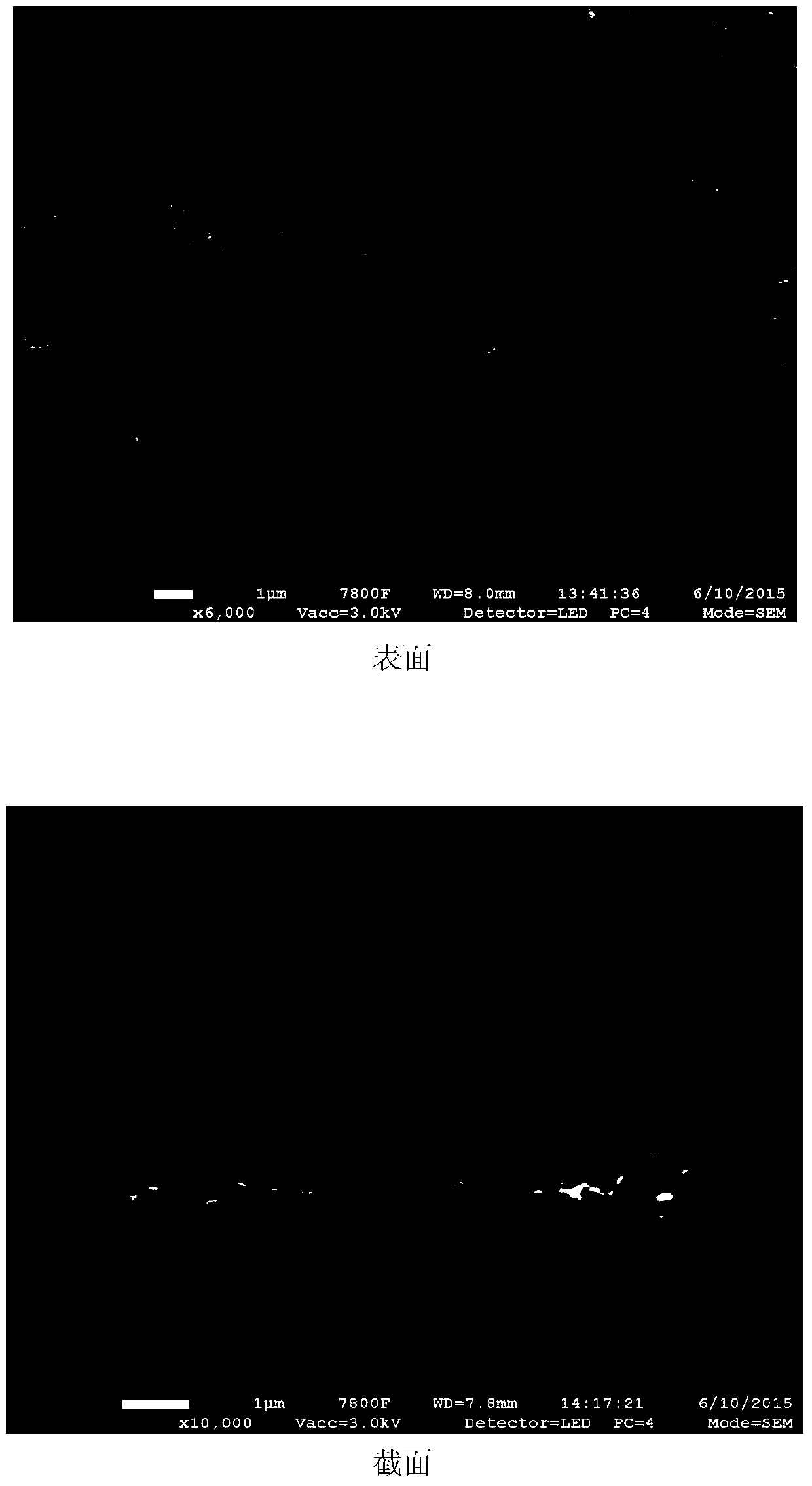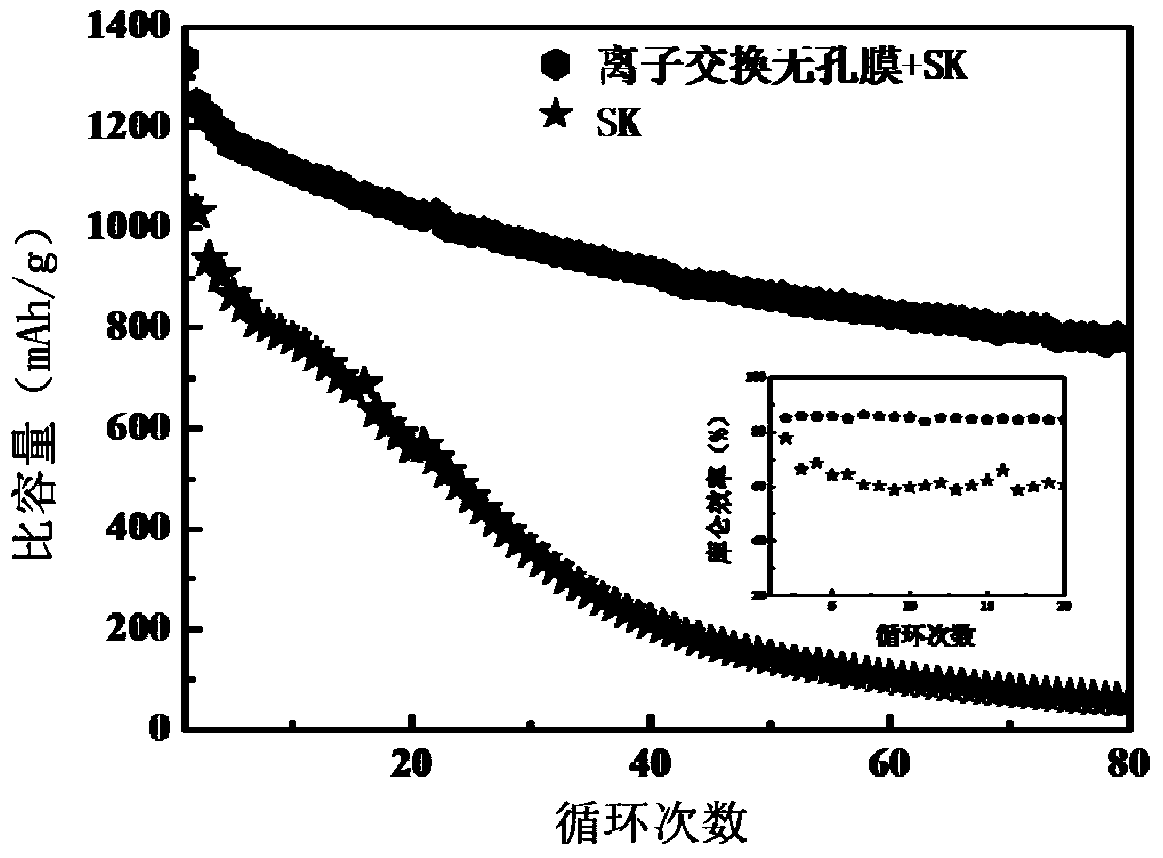Application of an ion exchange membrane in lithium-sulfur secondary battery
A lithium-sulfur secondary battery and ion-exchange membrane technology, which is applied in the direction of lithium batteries, battery pack components, non-aqueous electrolyte batteries, etc., can solve problems such as difficulty in meeting long-term use requirements, expensive fluorine-containing membranes, and severe swelling. Achieve the effect of maintaining ion transmission selectivity, easy mass production, and low cost
- Summary
- Abstract
- Description
- Claims
- Application Information
AI Technical Summary
Problems solved by technology
Method used
Image
Examples
Embodiment 1
[0035] Put 1.6 g of polyvinylidene fluoride and 0.17 g of sulfonated graphene in 10 g of DMAC, stir for 2 hours to form a uniform polymer solution, scrape and coat the glass plate with a scraper, and then quickly place the glass plate on a baking table at 70 ° C superior. After 3 hours, the completely volatilized film on the glass plate was removed, and placed in a vacuum drying oven at 70° C., with a vacuum degree of 0.1 MPa.
[0036] figure 2 The surface and cross-sectional scanning electron microscope pictures of the prepared membrane materials are given. The prepared ion-exchange membrane and commercial diaphragm SK (polyethylene monolayer film) are used to form a composite membrane, and a lithium-sulfur battery is assembled. The commercial carbon-sulfur composite is used as the positive electrode, and the metal lithium sheet is used as the negative electrode. 1M trifluoromethylsulfonyl The 1,3-dioxolane and ethylene glycol dimethyl ether (1:1 volume ratio) solution of ...
PUM
| Property | Measurement | Unit |
|---|---|---|
| pore size | aaaaa | aaaaa |
| thickness | aaaaa | aaaaa |
| pore size | aaaaa | aaaaa |
Abstract
Description
Claims
Application Information
 Login to View More
Login to View More - R&D
- Intellectual Property
- Life Sciences
- Materials
- Tech Scout
- Unparalleled Data Quality
- Higher Quality Content
- 60% Fewer Hallucinations
Browse by: Latest US Patents, China's latest patents, Technical Efficacy Thesaurus, Application Domain, Technology Topic, Popular Technical Reports.
© 2025 PatSnap. All rights reserved.Legal|Privacy policy|Modern Slavery Act Transparency Statement|Sitemap|About US| Contact US: help@patsnap.com



